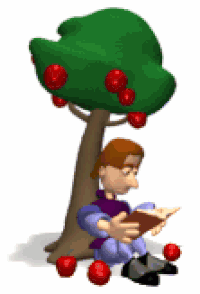Biomechanics is a branch of biophysics, and it studies the structure, function biomechanics is a branch of biophysics, and it studies the structure, function and motion of the mechanical aspects of biological systems using mechanical methods.d motion of the mechanical parts of biological systems using mechanical methods.
Why is Body Biomechanics important?
The way we move is a crucial component of injury prevention.
Ensuring we are moving using our advantage, forces like gravity and body weight can help us reduce the chance of injury and improve the load capacity.
To do so, we must train with a specific protocol that ensures excellent mobility to achieve muscular strength.
What is a force?

We can define a force as an influence that can change the motion of an object.
Gravity is an acceleration that becomes a force when applied to a body. This concept was well explained by Netwon, with the announcement of Newton’s second law that can be summarised with F=m*a.
F is the force, m is the mass, and a is acceleration.
In the case of acceleration of gravity, it does measure 8.91 m/sec2.
Said so, this means that we are constantly accelerated towards the ground.
That’s why we don’t float in the air.
And to better use this acceleration to our advantage, we have to move weight using the right angles.
To better understand body biomechanics, we must introduce the idea of Moment Arm, Vector and Torque.
What are Moment Arm Vector and Torque? And why are they essential for understanding human body biomechanics?

The moment arm is the distance between the force and the joint that hold that force back.
Think of yourself holding a water bottle up with your arm extended out. The joint holding up is your shoulder, the force is the combination of the bottle per the gravity a. (F=m*a).
A Vector is the direction in which a force is applied. In this case, the direction is 90° downwards.
Lastly, the Torque is the rapport between the Force and the Moment Arm.
So, the shorter the moment arm, the easier it would be to lift an object.
Understanding this concept would make your body biomechanics application much more accessible.
Body biomechanics at the gym.
When training at the gym, body biomechanics are fundamental.
I often get clients in post-gym injury who don’t know much about mobility training, its importance, and body biomechanics.
For example, keeping the weight so the bar is as close as possible to the leg is essential when doing a deadlift.
This is because the weight has to be close to the Centre Of Gravity of the body, or the moment arm would be increased, so the torque required to lift the weight would increase too.

In this case, the centre of gravity corresponds to the area where the actual torque is required, the lumbar area.
Indeed, it is easy to hurt yourself on the lumbar when you bring that bar too far from your body.
Body Biomechanic and Thai Massage
Traditional Thai Massage, as offered at Melbourne Massage and treatment, tends to use the body biomechanics at its best.
Even Thai Yoga exercises are based on the biomechanics principle, using lever and gravity as an advantage to create pressure on your body and reduce tension and heal aches.
This, indeed, is what makes Traditional Thai Massage so unique.
It is a technique of work where you don’t need great force, it is enough to use your body weight.
And because it is delivered on a ground mat, it is easier to apply the biomechanics principles.



Giovanni La Rocca
Giovanni moved to Melbourne, Australia, from Italy in 2008 and became a citizen in 2017. He started studying massage therapy in 2016, then completed a Bachelor of Health Science in Clinical Myotherapy in August 2024. During those years, he also specialised in Thai Massage and Manual Lymphatic Drainage for presentations like Lipoedema and Lymphoedema. Nowadays, he runs his clinic in Fitzroy North, Melbourne, where he integrates movement therapy into his practice to enhance overall well-being. He also values meditation, having completed several Vipassana courses. Committed to continuous learning, he aims to share his expertise in integrated therapies to help others achieve balance and resilience.